French Cavalry Attacks
At around 4pm, the French began a series of cavalry attacks on
Wellington's center. The standard explanation is that Ney saw a
minor withdraw along a portion of the Allied
line, interpreted it as a retreat, and ordered a pursuit by cavalry.
Napoleon would later try to distance himself from responsibility
for the attacks, but he knew what was happening and bears ultimate
responsibility.
The first attacks inflicted heavy casualties on the Allied skirmish
line; many of the skirmishers were hit too quickly to reach the
safety of the infantry squares.
The "Panorama" was painted in the early 1900s and is housed next to the
Lion Mound. Since so much dirt was moved from Wellington's center
to construct the mound,
the topography has been altered. The sunken road, once 10 feet
deep, is now at ground level. Regardless of what Victor Hugo
wrote, the sunken road was passable and did not decide the battle.
Below are panoramas of the "Panorama" along with some detailed
views.



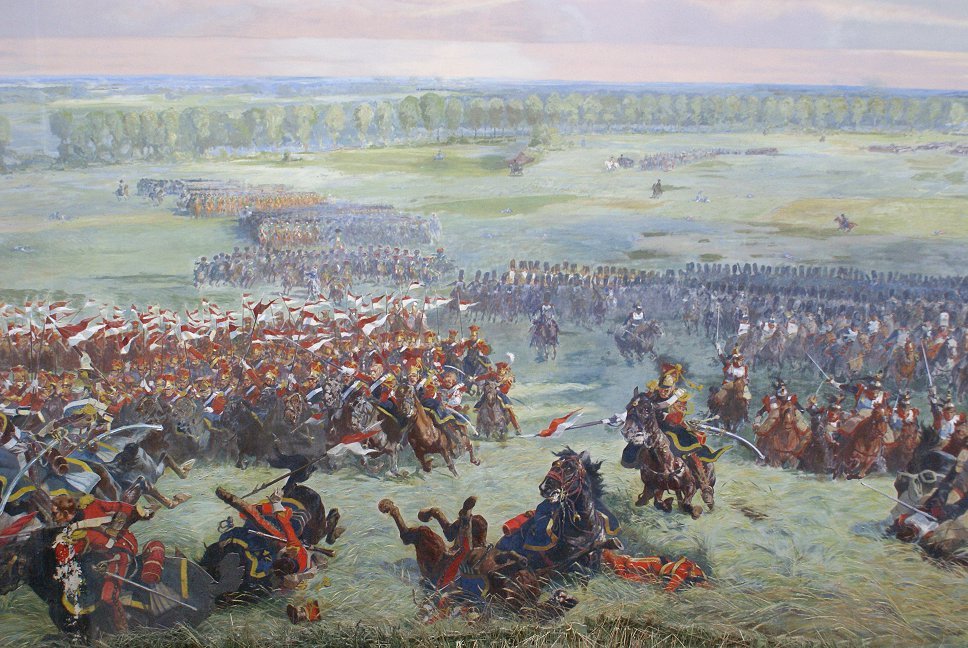
Napoleon orders attacks. He is on the white horse in the
distance. The trees along the Brussels road behind him are an
inaccuracy. The Red Lancers are at left. The lance was
perhaps the only cavalry weapon useful against an infantry square.
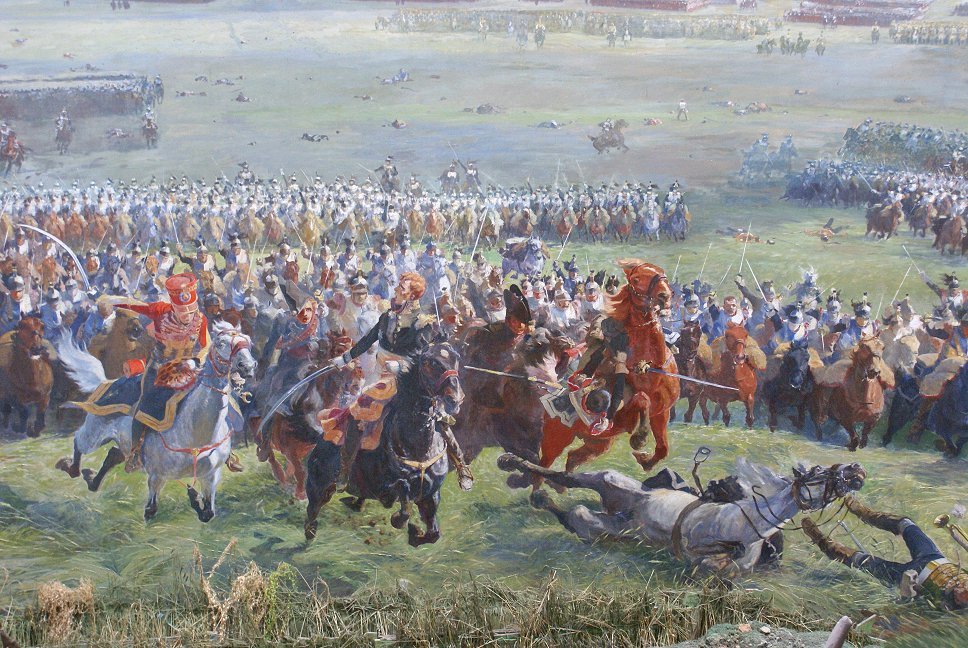
Ney with his ADC, Col. Heymes.
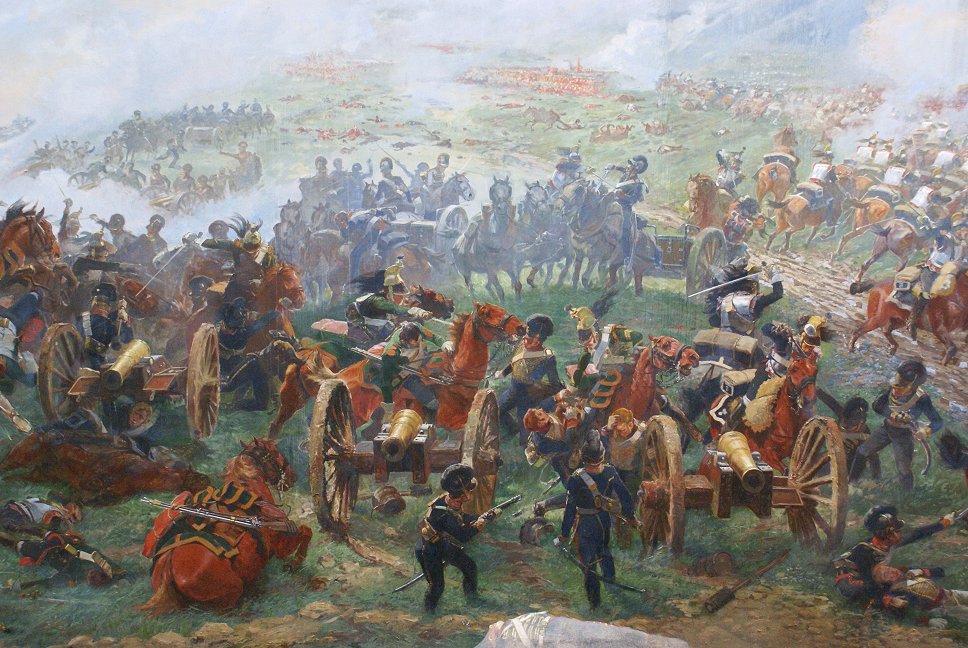
The first French attacks drove off the Allied gunners. Ordered to
take cover within the infantry squares, many instead fled the field
entirely. Some batteries limbered up and left the field contrary
to orders.
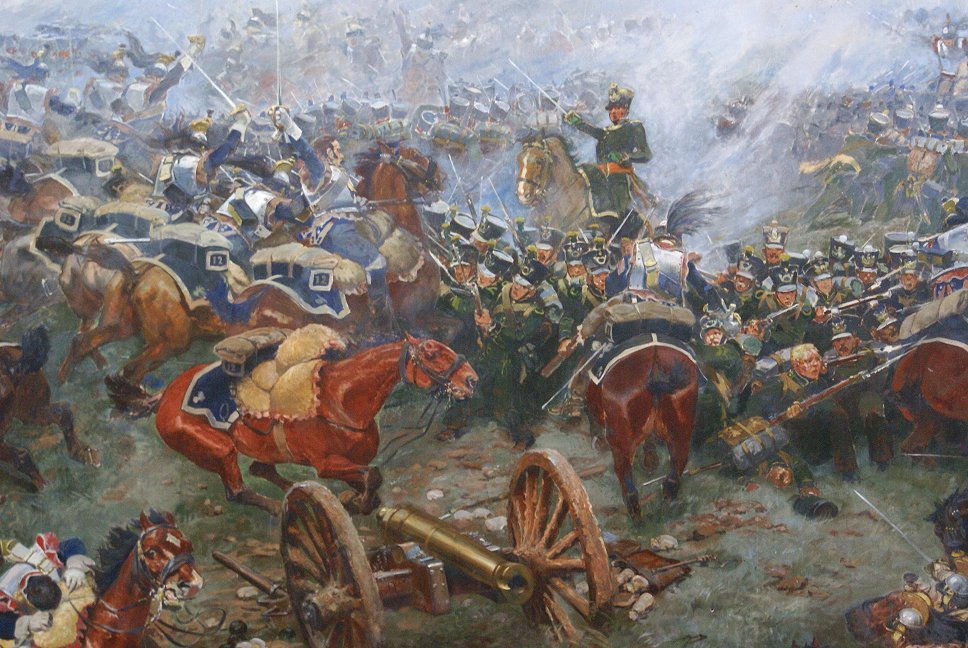
A Nassau square is attacked. Not the damage on the muzzle of the cannon.
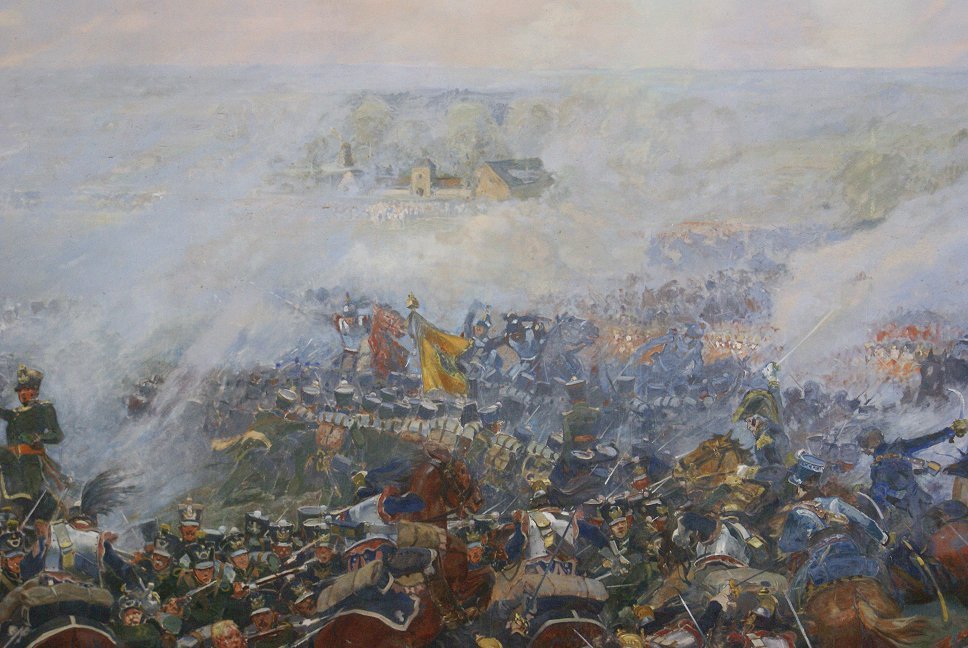
Mont St. Jean Farm is above the yellow Nassau flag.
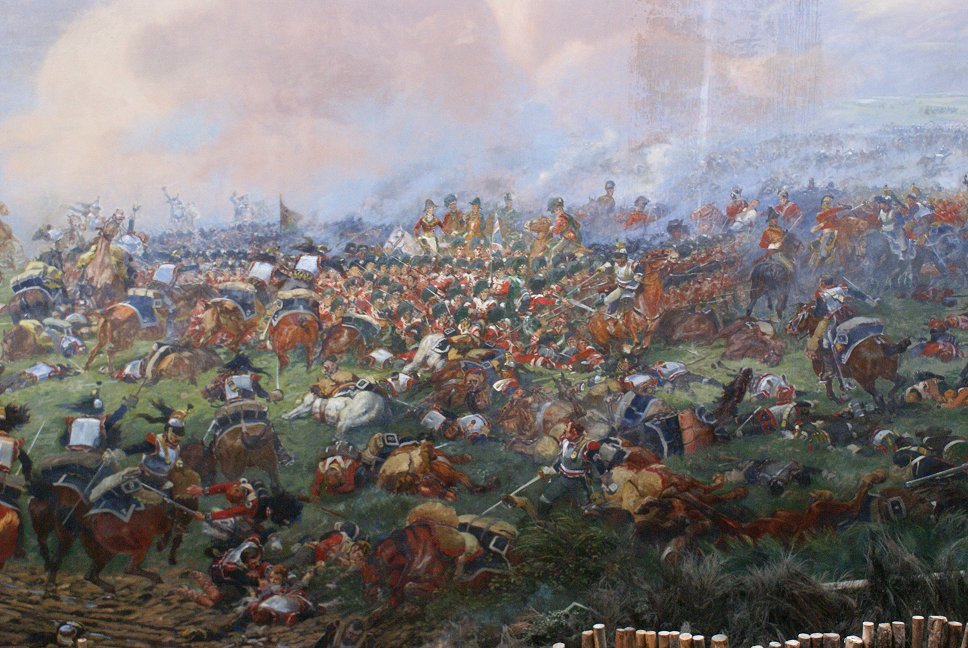
There are some inaccuracies. The 73rd was a Scottish regiment but not a Highland one, so they didn't wear kilts.
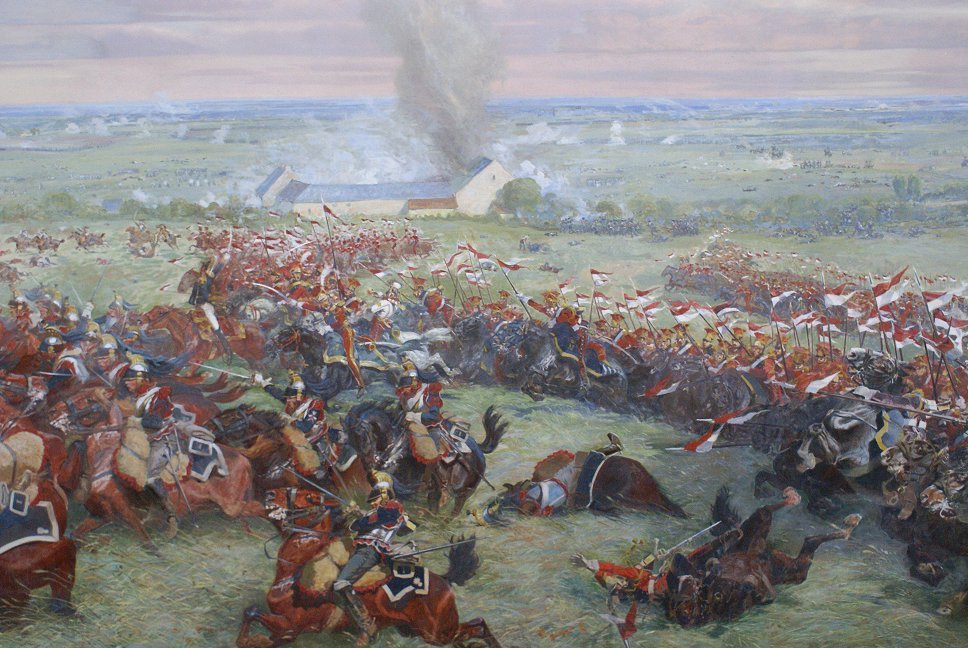
Fall of La Haye Sainte
Although some of the Allied infantry squares began to look shaky, none
of them broke. Allied cavalry behind the infantry squares were
used to counter-attack. Eventually their morale began to suffer,
and some of the Allied cavalry refused to attack. Had Napoleon
commited some infantry, he might have won the battle.
Perhaps Hougomont and La Haye Sainte still being in Allied
hands kept Napoleon from doing so.
One of the benefits of the French cavalry attack was that it helped the
attacks on Hougomont and La Haye Sainte. Wellington found it
difficult to relieve troops at Hougomont and resupply ammunition.
Hougomont remained in Allied hands, but La Haye Sainte did not.
With the fall of La Haye Sainte at 6pm, Napoleon was able to
bring artillery close to the Allied line. With the Prussians
advancing on his flank, it was time for a last, desparate attack on
Wellington's center.
Copyright 2010-11 by John Hamill









